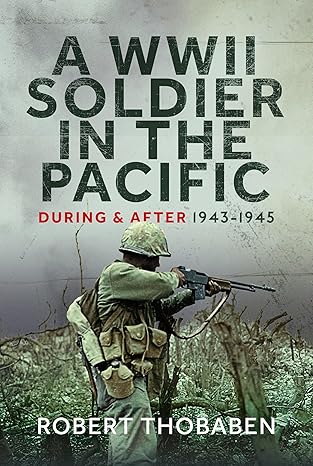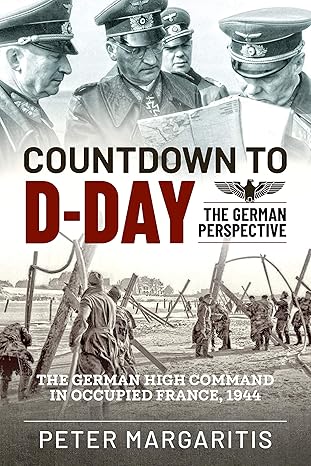Tancred Borenius – Forgotten intelligence hero or messenger for wartime Churchillian coup?
By John Harris
The spring of 1941 saw wartime Britain at its most vulnerable and desperate. Nightly bombing raids over the long cold winter of 1940 by the German Luftwaffe had sought to bring the Churchill led government to the negotiating table prior to the implementation of Hitler’s Operation Barbarossa, originally timetabled for May 15th 1941.
Contrary to the usual post war history, many in positions of influence in Britain also favoured a negotiated settlement. All they knew and saw was the nightly devastation from an enemy far superior to themselves in terms of current offensive power. They certainly didn't know of the potential respite from any future German invasion of Russia; indeed the two countries were still active partners in a mutually beneficial trade agreement; their so called Commercial agreement, originally signed in February 1940.
The previous summer, Britain had just survived the humiliation of Dunkirk and the subsequent Battle of Britain was only a victory in that Nazi Germany had been denied the opportunity of a sea bourn invasion in the late summer / autumn of 1940. Britain was battered, bombed and very much alone. The USA whilst cautiously supportive, were still politically isolationist and Britain's only substantive military aid had come from the remnants of the various fleeing continental armies that had managed to make their way to Britain just in front of their invaders.
However, the first six months of 1941 were surely to be a different matter. The spring was the traditional time for the onset of concentrated military activity and invasion and many in Britain with much to lose were genuinely scared. Communism, as personified by Stalin’s Russia had always been the real enemy to that strata of society, not Fascist Germany, which had previously been promoted and used as a buffer state. Apart from some men in wooden huts in Bletchley and those in government privy to the Ultra decrypts, there really were very few people with reason to suppose that a German invasion of Britain would not inevitably follow the aerial pounding and destruction of the Blitz.
Politically, many in the British plutocracy were also far from impressed with Churchill’s somewhat foolhardy promises of fighting on the beaches and the suchlike. Andrew Roberts’ ‘Eminent Churchillians’ deals brilliantly with the Tory party’s relationship with its new leader during this period. Many of his speeches that had helped to bind Britain’s working classes together produced the opposite reaction with Churchill’s natural allies, seeing him as the mere usurper of Chamberlain’s exalted mantle. Roberts tells how Churchill’s key parliamentary speeches were met with silence from his own benches, perhaps because they were slowly realising that ultimately fine words alone could not win wars.
The Germans, of course appreciated the vulnerability of the British position and the failure of their Luftwaffe to force Britain to the peace table had both frustrated and bemused the Nazi hierachy. They could not understand the British stubbornness in the face of plain logic as they saw it. Rudolf Hess had already instigated a personal initiative by asking his British expert, Albrecht Haushofer to write to his friend the Duke of Hamilton in late September 1940, suggesting a meeting 'on the outskirts of Europe'. This letter was duly intercepted and in accordance with the censorship protocol was forwarded to the intelligence services; MI5, MI6 and SOE in early November 1940.
Perhaps as a consequence of the above correspondence, as Hamilton was most likely also under surveillance, it was that at this most desperate of times an alternative, though most unlikely intermediary travelled to neutral Switzerland in an attempt to provide an alternative solution to the inevitable invasion, or at least, to provide the illusion of an alternative solution. Obviously, if a settlement could be reached there would be no reason for an invasion with all the inherent dangers of such a major action.
Enter the somewhat desperate scene described above; one Carl Tancred Borenius.

|
There had been amateur diplomats before. Birger Dahlerus, the Swede, had made use of his connections with Goering in an attempt to stave off war in 1939. James Lonsdale Bryans, the well connected old Etonian, had travelled to Arosa, Switzerland under the sponsorship of Lords Halifax and Brocket in early 1940. Later on that year, following the fall of France, there had been a rash of peace overtures to the extent that RA Butler, then undersecretary of State at the Foreign Office was unofficially dubbed the ‘Minister for peace feelers’.
But this one was different. The Borenius peace overture appeared to be coming from non-governmental parties within Britain.
Tancred Borenius was certainly not James Bond. He was not even British. Tancred Borenius was a Finn, born in Vyborg on the Carelian isthmus in 1885.
After completing a PhD in 1909, he moved to London and enjoyed a brilliant academic career as an Art expert. In 1922 he was made a Professor at University College London, specialising in Italian Art. He helped to found the Apollo magazine and later became editor of the Burlington magazine. He was a prolific author writing largely on Italian art.
However, perhaps his greatest skill was in cultivating social contacts, becoming the Art advisor to the Earl of Harewood and from 1924 began to advise Sotheby’s auction house. He worked alongside Bernard Berenson, who was also a part time MI6 agent. In addition to classical art he also organised the archaeological dig at Clarendon Palace near Salisbury and through that project had been introduced to the Duke and Duchess of Kent.
During the late 1930’s he accompanied the widowed Queen Mary on her annual holidays to visit her daughter Mary, who had married into the Lascelles family. There are reports in local Yorkshire papers of Queen Mary embarking on antique buying trips, typically accompanied by Borenius.
In short, he was brilliantly connected. He even found time to act as guardian to Dolly Wilde, Oscar’s beautiful but frail niece who seemed hell bent on following the same destructive route through life as her Uncle. She eventually committed suicide in 1941. Joan Schenkar, Dolly’s biographer describes Tancred as, ‘As adroit as a seal and just as slippery’. Borenius also is somewhat incongruously noted as being a leading Jacobite, being a member of the White Rose Society.
As war erupted in 1939, Tancred rediscovered his earlier political energies. He had acted as an envoy for Finland in 1919, being subsequently decorated, and ever since had kept in close touch with Gustav Mannerheim the Finnish leader. (He completed a biography of Mannerheim in 1940). His family who still lived on the Carelian isthmus had to flee the ancestral home in front of the invading Red Army.
Consequently, Borenius became Secretary to the Polish Relief Fund, one of the largest relief organisations in Britain. The British government had initially contributed £100,000 in clothing and other forms of relief. The minute book of this organisation is maintained at the London Metropolitan archive. The Fund committee met at 33 Belgrave Square, the home of Victor Cazalet, the MP for Chippenham and liaison Officer between the British government and Polish Government in Exile, led by General Wadlyslaw Sikorski. There are various records of Borenius meeting with both Cazalet and Sikorski.
The minute book of the Polish Relief Fund gives the first clue that Borenius had left the country. On 15th January 1941, Borenius records,
“The Hon.Secretary reported that he would be absent abroad on Finnish Government business for the next 3-4 weeks. He asked therefore to be excused from attendance at meetings.”
The minutes of 12th March 1941, some seven weeks later duly record that,
“The Hon. Secretary General had just returned to Great Britain after an absence abroad on Finnish Government business. He reported on the work of the Red Cross at Geneva for Polish prisoners and on the condition of Polish internees especially in Switzerland and the Pyrenees.”
In between the two recorded dates Borenius missed four meetings of the committee.
In 1999, John Harris had already learned of the trip through an interview with Lars Borenius, Tancred’s son. The trip had caused some amusement in the Borenius family on account of the fact that he had been given a suicide pill, the size of a golf ball. It was thought that he would fatally choke on the oversized pill well before any poison took hold. Lars also told Harris that his father had been given a code book to deliver to Switzerland and that he had been briefed by a Claude Dansey.
However, the third, and earliest piece of evidence of the trip was that of the diary of Ulrich von Hassell, the former German Ambassador to Rome and a founder member of the resistance movement to Hitler. The diary was hidden in the latter part of the war and was first published in 1948, albeit in a heavily censored form. The translation is an important component of the interpretation of what was actually trying to be achieved, so will quote from the original German.
“Es war nun sehr bemerkenswert, dass in Genf Professor Carl Burckhardt … mich aufsuchte und mir … mittteilte: Vor ganz kurzer Zeit sei … Borenius bei ihm erschienen und habe ihm auseinandergesetzt, und zwar offensichtlich im Auftrage von englischen Stellen, dass immer noch ein vernünftiger Friede geschlossen werden könne."
This is the condundrum. Who precisely were the 'englischen Stellen' and why was Borenius 'offensichtlich' – 'apparently' commissioned by them to travel to Geneva.? On whose behalf had Tancred Borenius travelled to Geneva, or 'apparently' had represented on travelling to Geneva, a trip that Harris had by now obtained three independent sources of evidence to demonstrate that it did indeed take place?
Harris has consulted with German language experts as to the translation of 'Stellen' and the nearest translation appears to be ‘officials’, or ‘office holders’. (Stelle is most usually translated as office). However, the inference is that they are not perhaps Government officials as a different noun would most likely be used. (Regierungsbeamte). In this context it is also perhaps telling that who ever has sent Borenius are described as ‘englischen‘ Stellen, rather than British, the point being that there was no english government as such. Winston Churchill was of course head of the British Government. It would seem that von Hassell also had doubts as to who was actually being represented by his use of the word 'offensichtlich'. Why say 'apparently' if the writer was really sure of the underlying allegiance?
As part of this debate we should now perhaps return to the interview with Lars Borenius, where John Harris was told that his father was briefed by Claude Dansey. Claude Dansey was the Deputy Director of MI6 having spent much of the late 1930’s in Switzerland setting up the 'Z' system of Intelligence gathering and reporting, largely as an alternative to the traditional “passport control" system that was rendered inoperable after May 10th 1940.
Consequently, it is a wholly logical conclusion that MI6 were involved in and responsible for sending Borenius to Geneva to meet with Carl Burckhardt, the well known and ambitious Director of the International Red Cross and keen intermediary between the British and Germans. They would also have sanctioned and facilitated the method of getting there and back; Whitchurch (Bristol) to Sintra (Lisbon) via KLM charter DC3 and Lisbon to Geneva via Spanish and Vichy French railway. Indeed, Frank Foley the well known MI6 agent is recorded as flying out to Lisbon on January 17th 1941 and it may well have been in part to simply accompany Borenius, with his poison pill and code book.
One is also tempted to wonder why a poison pill was necessary at all? Logically, it was to prevent the user from telling his inquisitor what he knew and so we now need to revert back to what von Hassell records in his diary as being told to Carl Burckhardt.

|
However. Some basic questions still remain. It is without doubt that MI6 were responsible for getting Tancred Borenius half way across Europe and back again. It is also without doubt that Borenius was taking a considerable risk; Leslie Howard, the filmstar lost his life returning from Lisbon in 1943 on the same route. He was in a plane that was shot down by the Luftwaffe over the Bay of Biscay.
So why Borenius? By 1941 Borenius was a rotund, unfit, 56 year old art Historian. He had few attributes of the secret agent, save his diplomatic experience for Finland at the end of the first world war. However, given that he was given a poison pill, what he had to say must have been deemed very sensitive indeed. It is now understood that Borenius also knew Carl Burckhardt, pre-war, most likely through his Art history connections.(An earlier relative of Burckhardt, Jacob, was described as the 'father of art history').
Furthermore, Ulrich von Hassell makes it clear from his diary entry that Borenius did much more than just deliver the code book. The entry continues to detail the terms under which a peace could still be concluded; a type of restoration for Poland, a division of Europe but the British Empire to remain untouched. The not unusual demands, but hardly 'Finnish government business?
So who was giving Borenius the necessary information to impart? He went still further advising that sentiment was 'favourable in the cabinet' and that peace was possible, but ‘not for much longer’. It is not immediately clear how, or from where he would have obtained this information (or appeared to have gotten the information) were it not perhaps for a significant edit between the 1948 print copy of the diary and the 2011 edition of the same book.
The 1948 edition states that Borenius had very intimate connections with …........(left blank). The 2011 edition has no such inhibitions, revealing the blank space to be 'The Queen', but even this is not straightforward or simple.
As has already been described, Borenius was close to the Lascelles family professionally and was close to Queen Mary and other Royal family members. In this writer's opinion it is likely therefore that 'The Queen' was Queen Mary, whose opinion on the first world war, Germans and Germany was well known. (“We backed the wrong horse”, etc). Queen Mary’s daughter in law was also not of dissimilar views with Edouard Daladier, the French Prime Minister stating that ‘she was an excessively ambitious young woman who would be ready to sacrifice every other country in the world so that she may remain Queen’.
So, this is where further interpretation becomes more difficult. Borenius was clearly sent by MI6 to Geneva 'apparently' representing 'english officials.' That much is now proven, from three independent sources.
However, are the English officials (englischen Stellen) the Royal family? Or, was Borenius merely 'apparently' sent by the Royal family, viz. MI6 sent Borenius as part of some ruse to buy time so as to fend off a German invasion. Is this why Borenius was given the poison pill? It is difficult to otherwise understand perhaps what the Art Historian could relay or impart that a King's messenger could not, save of course for his 'intimate connection' to the British Royal Family and the implied credibility that could bring.
We will never know for sure what was said and who Burckhardt and von Hassell thought Borenius was actually representing. However, what is clear is that whoever was being represented, real or imagined, the Royal Family or MI6, Burckhardt quickly acted on the information. He firstly told von Hassell, who in turn, recorded the encounter in his diary on February 3rd 1941 and then wasted no time in telling his resistance colleagues. A later diary entry (March 10th 1941) details a Berlin meeting with von Hassell, Popitz and Albrecht Haushofer, Rudolf Hess's foreign affairs expert. Hess, amongst the Nazi’s was also not alone in his wish for a peace, Heinrich Himmler also sent his emissary, Carl Langbehn on a similar mission to Geneva.
Similarly, we know that on his return to London, in early March, Borenius dined with Cazalet and Sikorski. These significant meetings were not recorded in Cazalet's 1976 biography for whatever reason, even though they are clearly recorded in Cazalet's records which are held at Eton College.
Consequently, it would appear most likely that when Sikorski travelled to the United States at the end of March 1941 on a fundraising mission (he returned to Prestwick Scotland only a matter of hours after Hess had crashed some 20 miles away on 10th May 1941), he was aware from Borenius that in some quarters, there was still the possibility of an Anglo-German settlement. Certainly, that appeared to be the case as far as the British ‘Stellen’ were concerned, or, alternatively were MI6 cleverly buying time, safe in the knowledge that the respite would eventually come once Barbarossa started? A high risk strategy indeed, given the possibility of the USA discovering covert British peace missions.
By contrast, Borenius, being a Finn would have found an Anglo- German settlement an ideal and pragmatic solution, being able to bolster the interests of his homeland against Russian aggression. MI6 would not have needed to convince Borenius of the importance of his mission, but obviously he would not be told of the sensational information then percolating from the wooden huts of Bletchley.
Thereafter, following the return from his European mission, Borenius's star appears to dramatically wane. Throughout his academic life he had been a charismatic, though perhaps not wholly respected connoisseur. There had been notable feuds with the likes of Kenneth Clark and the suspicion was always that money possibly influenced attribution. However, unlike all other Finns he and his family were at least allowed to stay in Britain for the remainder of the war.
However, Sotheby’s stopped using him for attributions and he lost the editorship of the Burlington in 1945. Perhaps through the effects of the war, the impact on his homeland, or the loss of his prestige, in 1946 he was tragically sectioned under the 1890 Lunacy Act. Initially, he was admitted into St.Andrews, Northampton in early 1947 and was subsequently transferred to Laverstock House, near Salisbury, in March 1948, where he died on 2nd September, aged 63. In his will he left £14,865. He was buried in nearby Coombe Bissett churchyard.
On a personal level there is no doubt this is a very sad story. That such a gifted individual should rise through British pre-war society to its very heights and then end his days,
“Depressed, gloomy, pessimistic and apprehensive....suspicious of all those around him. I hereby certify that he is still of unsound mind and is a proper person to be detained under care and treatment”.
Is at the very least a personal tragedy.
However, the equally interesting aspect of this story remains as to who he was ‘apparently’ representing when making his journey to Geneva in January 1941. MI6 had clearly sanctioned and facilitated the trip and so the next question must be under whose orders were they operating? Was the trip really a British government sanctioned mission, or was it MI6 operating under the orders of another ‘englischen Stellen’?
Clearly, Borenius’ Finnish nationality would make the trip more easily deniable, if ever the facts had emerged during the war. MI6 could dismiss the trip as a Finnish initiative, just as Borenius had sought to do to the Polish Relief Fund committee. It is also the job of Intelligence to perform tasks such as the Borenius trip and the British Intelligence community were certainly more than capable of ideas such as those of buying time.
However, the suspicion remains that there was more to this mission than has as yet surfaced. As well as being a ‘deniable Finn’, it seems to this writer that the principle attribute Borenius held was that of a ‘Royal confidante’. Is this the true reason behind the ‘airbrushing’ from history of Tancred Borenius? Had he travelled to Geneva to spread the possibility of a Royal backed peace settlement, which might well have involved Churchill’s removal? Certainly not an impossibility, especially given the fact that not all participants would have been privy to the Ultra secret?
Adding to the uncertainty is the fact that in correspondence passing between this writer and Professor Keith Jeffrey, the official MI6 historian, it became clear that Jeffery does not consider the Hess affair to be an MI6 operation, even though we know that the Borenius mission was organised by MI6 under Dansey. Consequently, one can conclude that a) MI6 have destroyed the evidence b) Dansey was operating outside his authority or c) Dansey/ MI6 were facilitating a Finnish mission, though given the conversation as recorded by von Hassell this seems most unlikely, or d) the Hess flight was a unforeseen consequence of the Borenius mission, rather than a direct result.
What is sure is that presumably apart from money, Tancred Borenius did not receive any recognition or decoration for what at the very least was a brave decision in agreeing to travel to Geneva in January 1941. One must question why no decoration was awarded, as others involved, such as Dansey and Menzies were heavily decorated after the war. Winston Churchill also appeared to act strangely on 7th May 1941, three days before the Hess flight. He chose to make a debate over the conduct of the war one of a motion of confidence, effectively in him. Although he won by 447 to 3, it was recorded that ‘Winston and Anthony were badly shaken’. Had they been trying to flush out any defectors, by making them show their hand?
By way of postscript, in late April 1941, Albrecht Haushofer, Rudolf Hess’s emissary, travelled to Geneva to meet with Carl Burckhardt to discuss specifically the Borenius initiative and the subsequent reactions to it. A fortnight later, on May 10th 1941 Hess flew to Scotland. The suspicion must surely remain that the Borenius mission had the possibly unintended consequence of providing a rationale for the Hess flight based on the presumption of a coup d’etat to be launched against Winston Churchill.
| * * * |
© 2025 John Harris
Written by John Harris.
About the author:
John Harris and Richard Wilbourn have just completed their fifth book in 25 years on the Hess affair, Rudolf Hess: Treachery and Deception.(Jema Publications). The article comes from this new work. John Harris (57) is a Chartered Accountant and Richard Wilbourn (56) a Farms manager. Their research has taken them to five continents and believe this latest research to be fundamental in understanding the Hess affair.
* Views expressed by contributors are their own and do not necessarily represent those of MilitaryHistoryOnline.com.




















